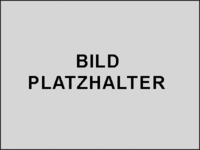Hauptseite/en: Unterschied zwischen den Versionen
Faga (Diskussion | Beiträge) |
Maza (Diskussion | Beiträge) |
||
| Zeile 37: | Zeile 37: | ||
Our [[Forschung/en | research and development]] projects cover a wide range of Applied Informatics. All projects are strongly influenced by the needs of economics and business environments. Close cooperations with enterprises support the transfer of know-how from academia into practice. | Our [[Forschung/en | research and development]] projects cover a wide range of Applied Informatics. All projects are strongly influenced by the needs of economics and business environments. Close cooperations with enterprises support the transfer of know-how from academia into practice. | ||
| − | |||
| − | |||
{{HideHeading1}} | {{HideHeading1}} | ||
Version vom 4. Juli 2009, 11:07 Uhr
Vorlage:Infobox column
Welcome at the Institute AIFB Universität Karlsruhe (TH),
the
Institute of Applied Informatics and Formal Description Methods.
- Prof. Dr. [[Sanja Lazarova-Molnar]]
- Prof. Dr. [[Andreas Oberweis]]
- Prof. Dr. [[Harald Sack]]
- Prof. Dr. [[Ali Sunyaev]]
- Prof. Dr. [[York Sure-Vetter]]
- Prof. Dr. [[Alexey Vinel]]
- Prof. Dr. [[J. Marius Zöllner]]
- News:
| 2024-04-16: | SECUSO Paper wins Distinguished Paper Award | |
| 2024-04-16: | Welcome Dr. Amir Ghasemi to SYDSEN! |
Institute of Applied Informatics and Formal Description Methods is part of faculty of faculty of Business Engineering at the University of Karlsruhe. The Institute was founded in 1971 at the School of Economics and Business Engineering of the University of Karlsruhe, Germany, and has since then been responsible for the education in Informatics within the renowned program of Business Engineering at Karlsruhe as well as the program of Economics Engineering. Additionally, it offers courses for the students of Business Mathematics, Industrial Mathematics, and of the recently created program of Information Engineering and Management.
In teaching, our main focus is put on analysing, modeling, constructing, and testing software systems, on economic solutions for complex problems, on business information systems, and on intelligent application systems. Software ergonomics and usability play an important role. The courses range from classical core Informatics to modern applications of Informatics in Business and Economics. They are complemented by seminars and advanced labs, giving students the chance to apply their new expertise to real world problems. The program of Business Engineering at the University of Karlsruhe offers three main areas of specialization that students may pursue:
- Information and Operations Management
- Management Science
- Insurance and Risk Management
Within the track of Information and Operations Management one third of the program is reserved for Informatics and thus it is the track with the highest percentage of Informatics. In that way it acknowledges the increasing relevance of Informatics in the job market.
Our research and development projects cover a wide range of Applied Informatics. All projects are strongly influenced by the needs of economics and business environments. Close cooperations with enterprises support the transfer of know-how from academia into practice.

